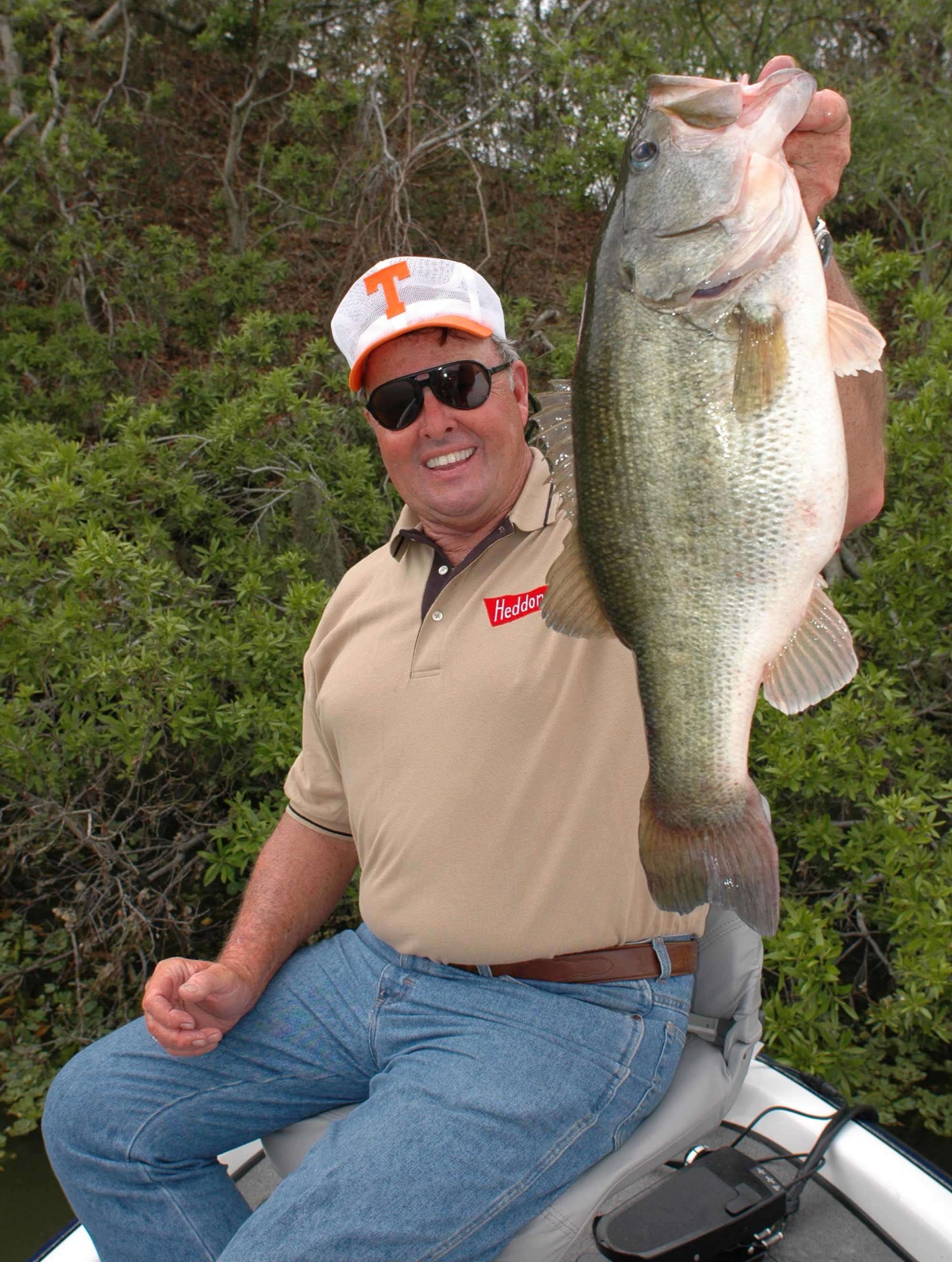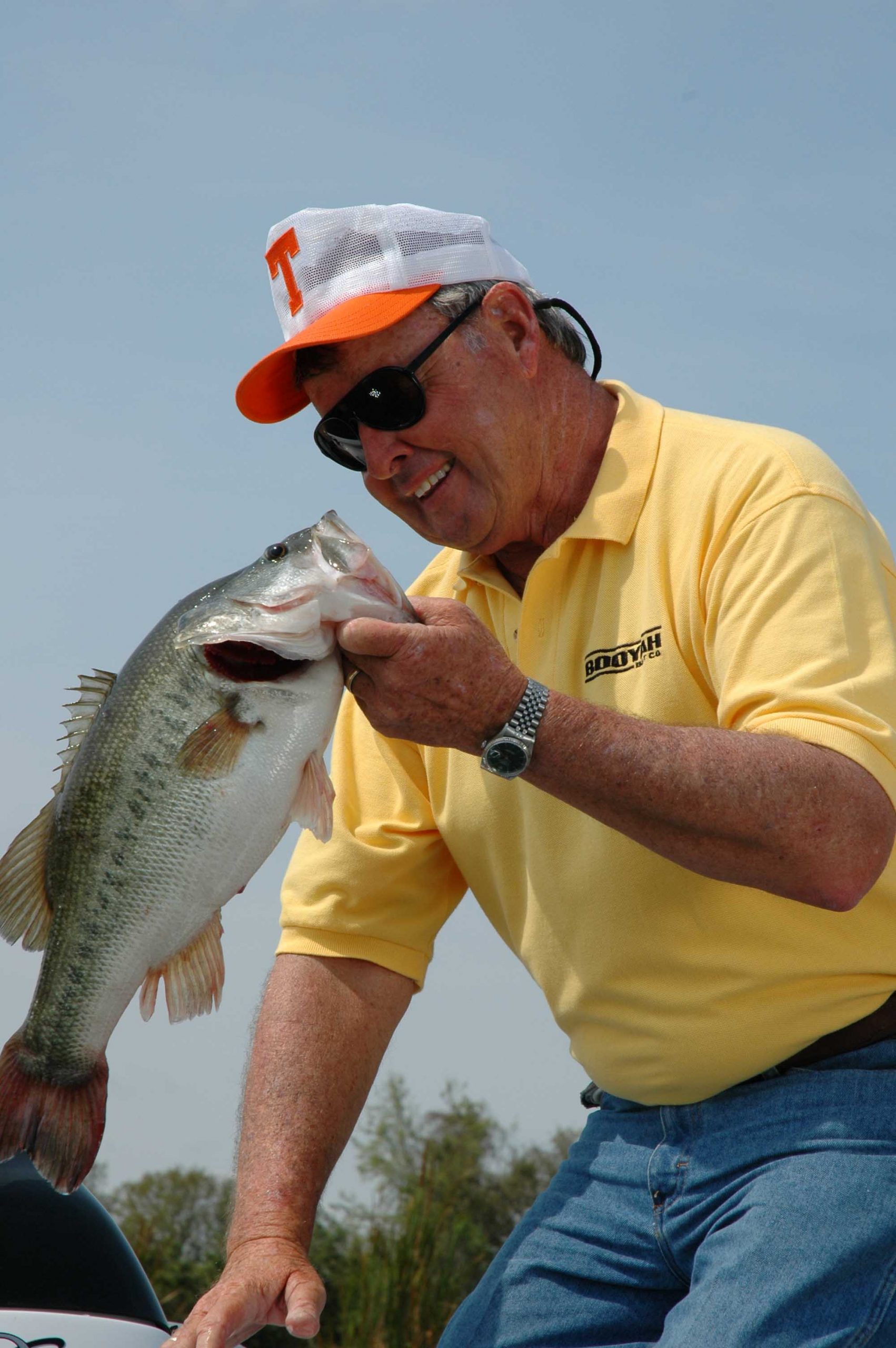
While on a 70-acre lake recently, Bill Dance and his partner started the day fishing with plastic worms. After going about 20 minutes without a bite, Dance decided the fish were not on the bottom, so he picked up another rod that had a lure he could work higher in the water column.
On his third cast, the TV fishing show celebrity had a bass boil on the lure, so he figured he was fishing too fast. Employing a slower presentation on the next cast, Dance caught his first fish of the day. “It was two minutes after 8 o’clock and at 10 minutes to 3:00 we had caught 87 bass,” recalls Dance. “Some were three-quarters of a pound, but we had some up to six pounds.”
After landing their 87th bass, Dance asked his partner what he wanted to do, and he suggested they fish until they caught 100 bass. “At 3:30 we caught our 100th fish and quit,” says Dance. “The chrome color bait that I started throwing was solid white. All the chrome had come off of it.”
The lure he and his partner were throwing that day was a Bomber Long A 15A, which Dance classifies as a minnow bait. “It is a simple old bait,” he says. “It’s kind of been pushed to the side with all the new fads and new baits that have come along.”
The minnow plug has been miscast as one dimensional, but Dance knows the lure’s versatility. “For years and years there has been a misconception that stickbaits or jerkbaits are just cold-weather baits,” he says. “They work year-round, and what makes them so great is the multitude of ways you can work them. They work great on top or as a subsurface bait. You can even Carolina rig them and fish them as deep as you want.”
The Long A triggers strikes any time bass are in the shallows and the water is clear. “It’s an excellent bait when they first come off the spawn,” says Dance.
The bass fishing legend opts for minnow plugs in dark colors that create a silhouette for overcast days and brighter hues that reflect more on sunny days. When he needs to make long casts with the Long A in open water areas, Dance relies on spinning tackle with 10-pound Hi-Seas Grand Slam Select Copolymer. For casting accurately around cover, Dance switches to baitcasting gear and the same Hi-Seas line in 12-pound test. He favors 7-foot medium-action Quantum rods for both his spinning and casting presentations.

Dance experiments with his Long A retrieves until he discovers which cadence or rod movements trigger the most strikes. “It depends on the activity level of the fish,” he says. “Bass are notorious for following these types of lures, and that’s good because it tells the angler he’s doing something when he gets the attention of the fish.”
A series of twitches and pauses with the Long A usually produces for Dance whether he’s working the lure on top or just below the surface. “I like a twitch-twitch-twitch-pause-twitch and then I let it sit,” describes Dance. “I repeat that cadence again, and if I don’t get a hit I’ll reel it under about three feet and stop it and let it rise. Then I repeat that again.”
The key to his retrieve is keeping 12 to 14 inches of slack in his line while twitching the rod to generate the best lure action. “When fishing this bait it’s all about wrist, eye and rod tip coordination,” Dance says.
If twitching the Long A fails to produce a strike, Dance resorts to deadsticking it. Letting the lure sit motionless on the surface produced many of his fish that day on the 70-acre lake. “I had several fish just come up and blow into it,” he says. “Sometimes I’d let it sit for 10 seconds and then would barely twitch it, and they would blow it up.”
While it’s usually buried in tackle boxes during warm weather, the floating minnow bait is a fixture on one of Bill Dance’s rods throughout the late spring and early summer period.





